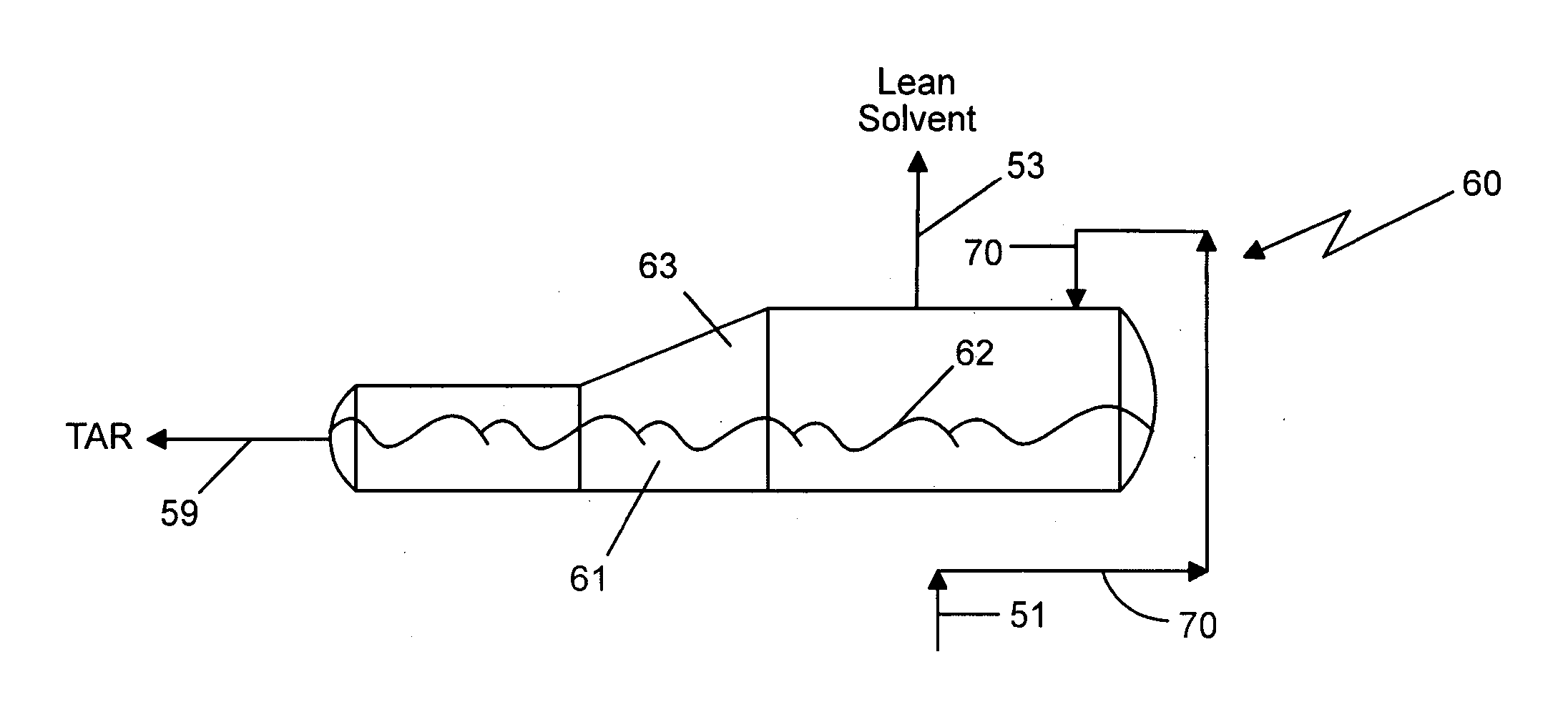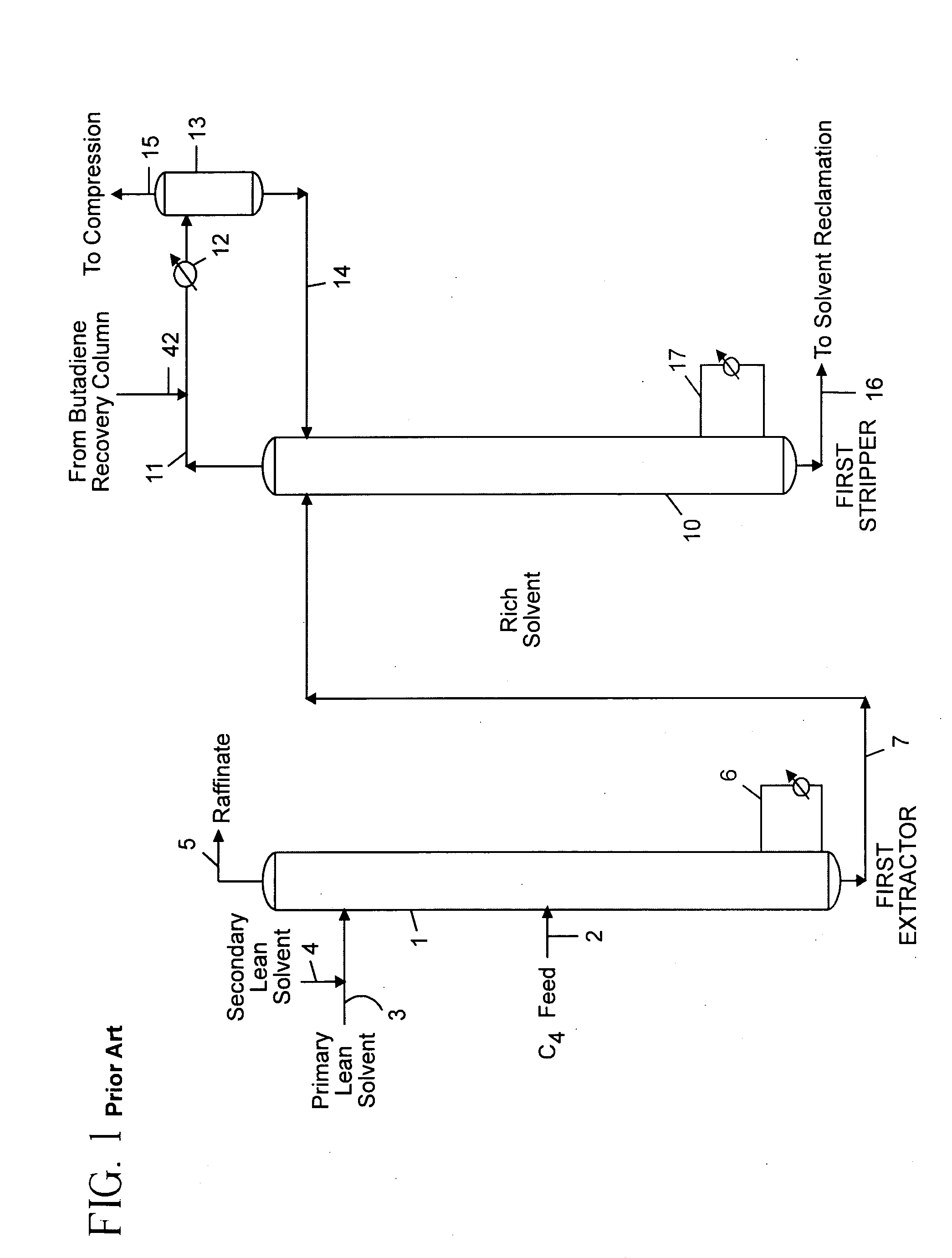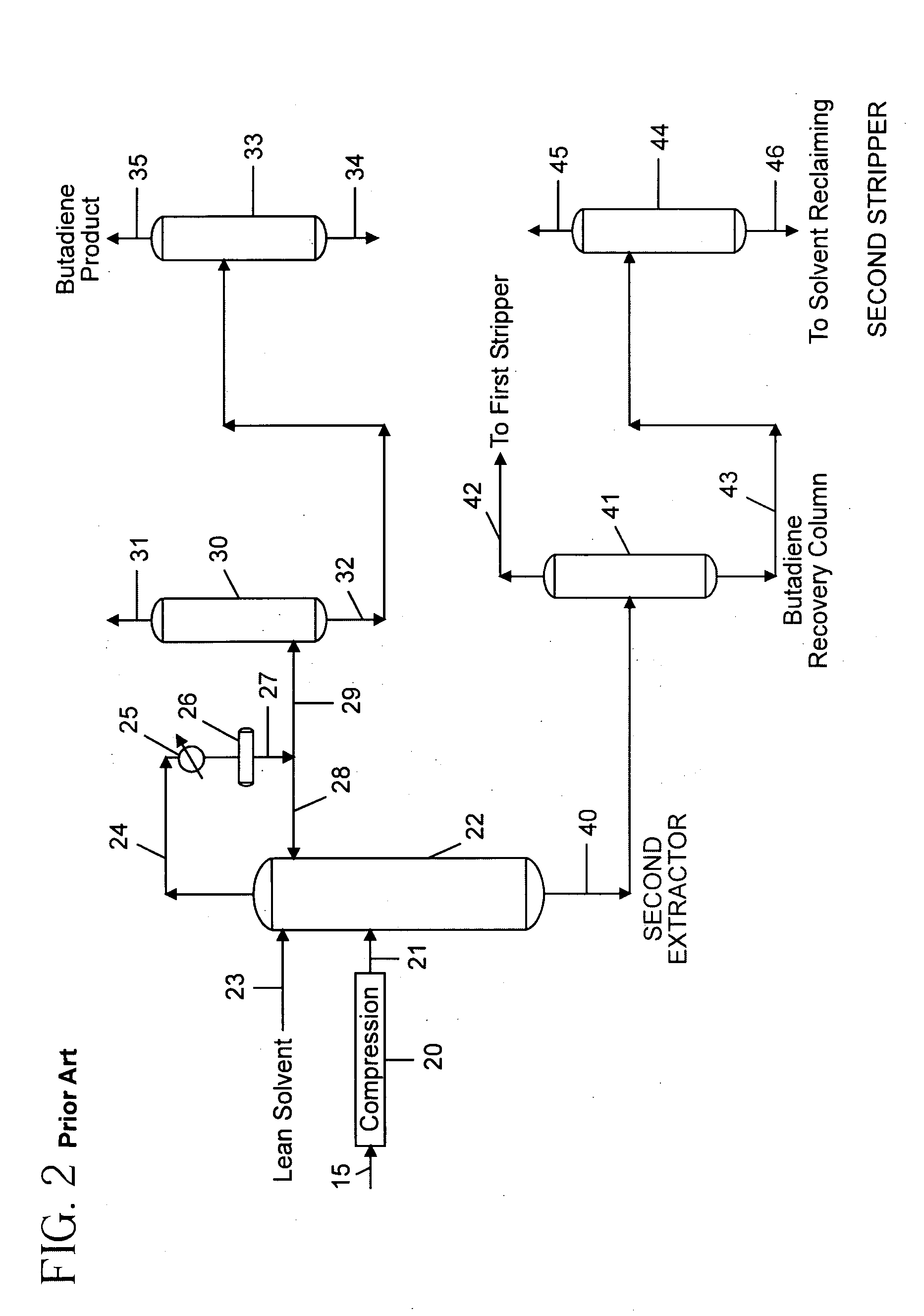Solvent extraction
- Summary
- Abstract
- Description
- Claims
- Application Information
AI Technical Summary
Benefits of technology
Problems solved by technology
Method used
Image
Examples
example 1
[0047] An extraction unit as depicted in FIGS. 1 through 4 was operated using a crude C4 feedstock 2 for extractor 1 that contained about 6.8 wt. % n-butane, about 1.3 wt. % isobutane, about 13.5 wt. % 1-butene, about 10.3 wt. % 2-butenes (cis and trans), about 27.9 wt. % isobutylene, about 39.5 wt. % butadiene (1,2 and 1,3), about 0.5 wt. % vinyl acetylene, and about 0.1 wt. % ethyl acetylene, all wt. % being based on the total weight of the feed. Feed 2 was introduced into extractor 1 at a temperature of about 125° F. at about 65 psig, and a flow rate of about 60,000 pounds per hour (pph).
[0048] The extraction process employed dimethylformamide as the primary solvent and furfural as the secondary solvent. The total weight of the combined solvents, including a tar load of 2 wt. %, contained about 95 wt. % primary solvent and about 3 wt. % secondary solvent. The solvents were introduced into extractor 1 at a temperature of about 104° F. at about 48 psig, and a flow rate of about 41...
example 2
[0058] The operation of Example 1 was repeated except that the flow rate of stream 5 to reboiler 60 was increased to about 2,100 pph (a 23.5% increase), and the temperature of stream 51 reduced to about 170° F. at a pressure of minus 10 psig (4.7 psia).
[0059] After operating under these conditions for an extended time sufficient to stabilize the extraction system as a whole, the tar content of stream 51 had fallen to about 1 wt. % based on the weight of stream 51, and the secondary solvent plus tar level had fallen to less than 5 wt. % based on the weight of stream 51.
[0060] Continued operation of the extraction unit as a whole at this reduced tar loading required emptying of reboiler 60 only 7 times per month in order to maintain the 1% tar loading even though the feed rate of stream 51 had been increased 23.5%.
[0061] In addition, while operating under this reduced tar level, about 25% less primary solvent was used and the extraction unit experienced a self-cleaning effect in th...
PUM
| Property | Measurement | Unit |
|---|---|---|
| Temperature | aaaaa | aaaaa |
| Weight | aaaaa | aaaaa |
| Pressure | aaaaa | aaaaa |
Abstract
Description
Claims
Application Information
 Login to View More
Login to View More - R&D
- Intellectual Property
- Life Sciences
- Materials
- Tech Scout
- Unparalleled Data Quality
- Higher Quality Content
- 60% Fewer Hallucinations
Browse by: Latest US Patents, China's latest patents, Technical Efficacy Thesaurus, Application Domain, Technology Topic, Popular Technical Reports.
© 2025 PatSnap. All rights reserved.Legal|Privacy policy|Modern Slavery Act Transparency Statement|Sitemap|About US| Contact US: help@patsnap.com



